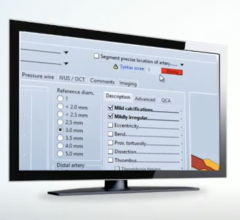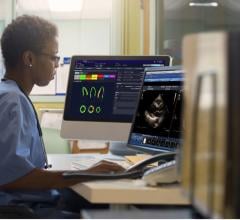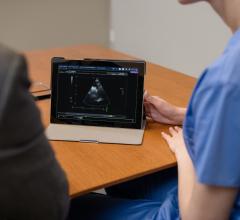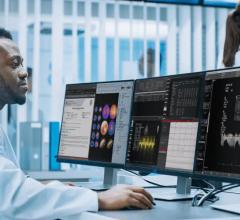Oklahoma State University Medical Center, located in Tulsa, Oklahoma, provides high-quality health services to rural and urban Oklahoma. The medical center has a partnership with Oklahoma State University Center for Health Sciences, providing a training ground for healthcare professionals across the region.
As with many cardiology departments, the center used multiple systems to store relevant cardiology patient information. Clinicians were required to log on to as many as five different systems in order to review historic patient cardiovascular images and reports. Images were available only in the cardiovascular department and physicians could not access the images from elsewhere. This made it difficult for them to do their work in a timely manner and forced them to have to return to the department any time they needed to review an image. The inaccessibility of images made it more difficult for physicians to collaborate.
The image quality also was not up to the standard that doctors hoped for. “We had an old product and the image quality was less than desirable,” says Connie Ryan, clinical resource manager for cardiovascular services at Oklahoma State University Medical Center. “We knew that we needed to significantly upgrade the quality of the images.”
To solve these problems, and to enhance patient care and increase overall productivity, the center launched a search for a new cardiovascular IT solution.
Choosing and Deploying Centricity Cardio Enterprise
The department was already using GE Healthcare’s Mac-Lab Hemodynamic Recording System as part of its comprehensive cath lab workflow infrastructure, and was extremely pleased with the system and support for it.
“The system worked so well that it seemed like a natural choice to go with Centricity Cardio Enterprise,” Ryan says. “That way, we knew that we would be able to interface the two systems, and easily move the data over.” (Centricity Cardio Enterprise solution is comprised of the Centricity Cardio Imaging and Centricity Cardio Workflow products.)
Beyond that, she says, the department was impressed with Centricity Cardio Enterprise (CCE) image quality, flexibility, and the way it makes images easily accessible to physicians.
Deployment went extremely smoothly. “We didn’t even require an IT staffer to install the application on physicians’ computers,” Ryan recalls. “It saved us a great deal of IT time, and like any other hospital, we only have a finite amount of resources, so that was a great benefit.”
Broader Access to Images, Enhanced Workflow
“Centricity Cardio Enterprise has made it much easier for physicians to get access to images, improved our efficiency and workflow, reduced the time it takes per procedure by 15 to 20 minutes, and has enhanced the cardiac care we offer,” Ryan said.
CCE’s greatest benefits flow from the much-enhanced access to images for physicians. They no longer have to come to the department in order to view the images, which considerably increase their productivity and workflow.
“Since we’ve installed CCE, physicians can go into special office spaces we’ve set up for them, or into their regular offices, and view images in a quiet, distraction-free environment, and finish their reports there,” Ryan says. “It has greatly enhanced their workflow and allows them to get the same amount of work done in less time.”
Doctors also can finish their reports more quickly. This, combined with enhanced physician efficiency, has led to a faster case turnaround in the department, Ryan says.
“We have a much faster case turnaround now than we did before,” she says. “Before, we would have to wait for the physician to come in and view the images, and the patient would be waiting while the physician was still in the monitor room, dictating his report. That’s no longer the case, and so things move more quickly.”
When a procedure is performed, the cardiologist can sign off on the report, which is then sent to the hospital’s Meditech electronic medical records system. There it is available to the attending physician before the patient even gets back to his room.
On average, Ryan estimates all this has reduced the time per case by between 15 and 20 minutes. That also results in the department being able to perform more procedures in a given day.
“There are always busy times and slow times in healthcare, but at those times when we’re experiencing a surge of cases, CCE keeps our patient flow going. And if we have emergency cases, it keeps those cases from having to sit in the emergency room.”
It also leads to earlier discharge of patients, she says. “If you have an echocardiogram done on Friday, doctors can now view the images that day, and patients can be discharged rather than having to wait around the weekend for the doctor to get to see the images on Monday. That has been a considerable benefit.”
Upgraded Image Quality, Cardiac Health Management
The GE Healthcare solution offers better image quality than the department’s previous system and helps doctors offer more informed care and enhanced cardiac health management.
“The enhanced image quality is quite dramatic,” Ryan says. “A number of cardiologists have said they were absolutely astounded by it. That helps quite a bit when making diagnoses.”
Invasive cardiologist Matt Wilkett, D.O., echoes the statement on the image quality of the system, saying, “Images are really sharp.” He has specialized training in reading both cardiovascular computed tomography and nuclear cardiology images.
In addition, being able to view the images from anywhere with an Internet connection has helped physicians provide more timely help.
“A lot of times our cardiologists are not the attending physicians, and so they’re being asked by another physician for a consultation and to discuss their findings,” Ryan says. “Before, that was much more difficult to do, because the doctor would have had to come to the department, which was not always possible.
Now they can access the images quite easily and so are able to offer help when it’s required, in a much more timely way.”
Increasing Collaboration
CCE has led to increased collaboration among physicians as well. One reason is that images are more widely available so they can be shared more easily. Another is that CCE interfaces with the hospital’s Meditech electronic medical records system.
“Once the cardiologist finishes his report and signs off on it, it’s quickly available in Meditech. That means it’s accessible to other health professionals, which certainly leads to more collaboration,” Ryan says.
Increasing Physician Efficiency and Patient Satisfaction
Physicians have experienced an increase in efficiency because they can more easily access images and data, Ryan believes. She also says that they now have much greater control over the layout and information presented in their reports.
“It’s also been a big patient satisfier,” she says. “Patients can be safely discharged more quickly. No one wants to sit around and wait, so they’re much happier now.”

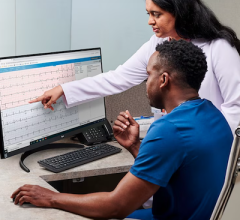
 November 06, 2025
November 06, 2025 


